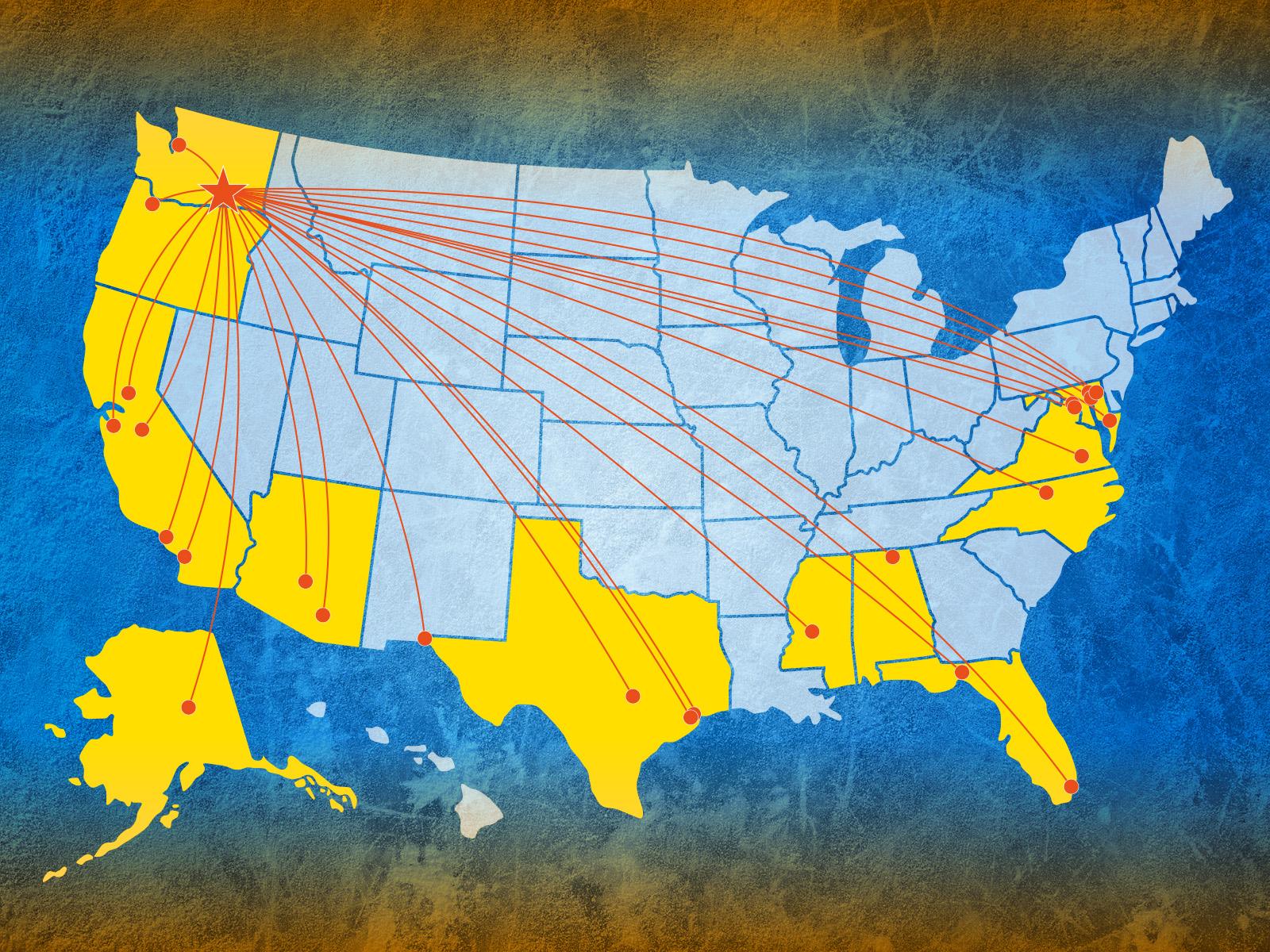Meaningful Partnerships to Diversify Science
PNNL’s Climate Network with MSIs and HBCUs aims to diversify science

The PNNL-HBCU/MSI Climate Network includes partners from over 30 different institutions.
(Image by Shannon Colson | Pacific Northwest National Laboratory)
Collaborations have long been a pillar of science. Bringing together researchers with different knowledge and skill sets empowers teams to face complex scientific challenges, like those in energy and national security. Pacific Northwest National Laboratory (PNNL) researcher Samson Hagos is a catalyst for creating diverse teams. The accomplished scientist—who received the American Meteorological Society's Clarence Leroy Meisinger Award in 2019—launched a network to bring together climate researchers from a wide range of communities.
From idea to action: building a network
When the COVID-19 pandemic began and conference attendance started to dwindle, Hagos sought a different way to interact with other scientists. He was particularly interested in bridging the gap between the Department of Energy (DOE) national laboratory system and minority serving institutions (MSIs) and historically black colleges and universities (HBCUs).
“By virtue of PNNL’s location, we are at a disadvantage when it comes to engaging with minority or underserved communities,” said Hagos. “So, we needed to be proactive to maintain our competitiveness within the climate impacts, resilience and solutions landscape.”
Hagos began reaching out to colleagues who were interested in learning more about DOE opportunities for academic researchers. Soon, the PNNL-HBCU/MSI Climate Research Network was born.
Forming fruitful partnerships
A small gathering of atmospheric scientists made up the first PNNL-HBCU/MSI Climate Research Network meeting in June 2021. However, what initially began as an informal gathering of colleagues quickly grew to encompass 30 different institutions from across the United States.
“On average, we add a new institution every month to the network,” said Hagos. “It’s all word-of-mouth; scientists invite their colleagues to collaborate and share opportunities.”
As one of the first members of the PNNL-HBCU/MSI Climate Research Network, Charles Ichoku from the University of Maryland-Baltimore County recognized the network as an opportunity to increase diversity in science. At the time of his invitation into the network, Ichoku was a distinguished scientist of the National Oceanic and Atmospheric Administration Cooperative Science Center in Atmospheric Sciences and Meteorology at Howard University.
“Engaging students, facilitating access to opportunities, and ensuring proper training are key to increasing minority participation in science,” said Ichoku. The PNNL-HBCU/MSI Climate Research Network fosters partnerships between PNNL and HBCUs/MSIs that aim to achieve these goals.
The network disseminates information about DOE funding opportunities and empowers universities to play leadership roles in DOE projects. Since its inception, the network helped facilitate the development of two Climate Resilience Centers and three Reaching a New Energy Sciences Workforce projects:
- Applied Geospatial Data-science Initiative for Urban Climate Change Studies (AGDI-UCCS)
- Sub-seasonal to Interannual Variability and Predictability of Rainfall Over East Africa
- Co-designing Foundational Capabilities to Diversify the Scientific Workforce
- The Climate Resilience Center in Piedmont Triad of North Carolina (NC)
- Center for Climate Adaptation and Resilience in Baltimore (CCARB).
Branching out: building the next generation of the PNNL-HBCU/MSI Climate Research Network
The network expanded not only in membership, but also in areas of research. Soil microbiologist Aditi Sengupta aims to bring more scientists in her field into the network.
Sengupta’s interest in MSIs is a personal one: following a postdoctoral fellowship at PNNL, she taught at California Lutheran University, a Hispanic serving institution. There, she saw firsthand how few DOE opportunities reached her students.
“DOE has so many great programs, such as Science Undergraduate Laboratory Internships, for students and faculty,” said Sengupta. “With the PNNL-HBCU/MSI Climate Research Network, we can make these opportunities more accessible to underserved populations.”
Sengupta now works at the Environmental Molecular Sciences Laboratory, a national scientific user facility funded by the DOE Office of Science’s Biological and Environmental Research program, located at PNNL. Along with Hagos, Sengupta plans to continue to engage scientists from across a variety of climate science disciplines through the network.
“We welcome the expansion of the network into new areas of expertise,” said Hagos. “The more diverse our team, the stronger our science can be.”
Researchers interested in joining the network should contact Hagos through this contact form.
Published: February 1, 2024